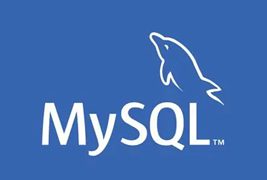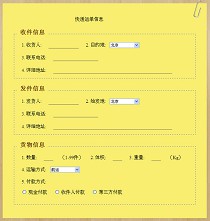PHP8.1的十大新功能,快用起来吧!
PHP 8.1 现已推出,它附带了新功能和性能改进——最令人兴奋的是新的 JIT 编译器。它最近于 2021 年 11 月 25 日发布。
我将详细演示 PHP 8.1 提供的 10 大特性,以便您可以开始在您的项目中使用它们,并改善您的 PHP 体验。初学者和有经验的开发人员可以从本文中受益。
PHP 8.1 提供的 10 大功能
1、枚举
2、Fiber(纤维)
3、never返回类型
4、readonly属性
5、final类常量
6、新的array_is_list()函数
7、新的fsync()和fdatasync()函数
8、对字符串键数组解包的支持
9、$_FILES新的用于目录上传的full_path键
10、新的IntlDatePatternGenerator类
1. 枚举
PHP 8.1 添加了对枚举的支持,简写为 enum 。它是一种逐项类型,包含固定数量的可能值。请参阅以下代码片段以了解如何使用枚举。
- <?php
- /**
- * Declare an enumeration.
- * It can also contain an optional 'string' or 'int' value. This is called backed Enum.
- * Backed enums (if used) should match the following criteria:
- * - Declare the scalar type, whether string or int, in the Enum declaration.
- * - All cases have values.
- * - All cases contain the same scalar type, whether string or int.
- * - Each case has a unique value.
- */
- enum UserRole: string {
- case ADMIN = '1';
- case GUEST = '2';
- case WRITER = '3';
- case EDITOR = '4';
- }
- /**
- * You can access a case by using
- * the '::' scope resolution operator.
- * And, to get the name of the enum case, you
- * can use the '->' followed by the attribute 'name'.
- */
- echo UserRole::WRITER->name;
- /**
- * To get the value of the enum case, you can
- * use the '->' followed by the attribute 'value'.
- */
- echo UserRole::WRITER->value;
- ?>
2. Fiber(纤维)
PHP 8.1 添加了对 Fiber 的支持,这是一个低级组件,允许在 PHP 中执行并发代码。Fiber 是一个代码块,它包含自己的变量和状态堆栈。这些 Fiber 可以被视为应用程序线程,可以从主程序启动。一旦启动,主程序将无法挂起或终止 Fiber。它只能从 Fiber 代码块内部暂停或终止。在 Fiber 挂起后,控制权再次返回到主程序,它可以从挂起的点继续执行 Fiber。
Fiber 本身不允许同时执行多个 Fiber 或主线程和一个 Fiber。但是,对于 PHP 框架来说,高效管理执行堆栈并允许异步执行是一个巨大的优势。
请参阅以下代码片段以了解如何使用 Fiber。
- <?php
- /**
- * Initialize the Fiber.
- */
- $fiber = new Fiber(function(): void {
- /**
- * Print some message from inside the Fiber.
- * Before the Fiber gets suspended.
- */
- echo "Welcome to Fiber!\n";
- /**
- * Suspend the Fiber.
- */
- Fiber::suspend();
- /**
- * Print some message from inside the Fiber.
- * After the Fiber gets resumed.
- */
- echo "Welcome back to Fiber!\n";
- });
- /**
- * Print a message before starting a Fiber.
- */
- echo "Starting a Fiber\n";
- /**
- * Start the Fiber.
- */
- $fiber->start();
- /**
- * Fiber has been suspened from the inside.
- * Print some message, and then resume the Fiber.
- */
- echo "Fiber has been suspended\n";
- echo "Resuming the Fiber\n";
- /**
- * Resume the Fiber.
- */
- $fiber->resume();
- /**
- * End of the example.
- */
- echo "Fiber completed execution\n";
- ?>
3.never返回类型
PHP 8.1 添加了名为never的返回类型。该never类型可用于指示函数将在执行一组指定的任务后终止程序执行。这可以通过抛出异常、调用exit()或die()函数来完成。
never返回类型类似于void返回类型。但是,void返回类型在函数完成一组指定的任务后继续执行。
请参阅以下代码片段以了解如何使用 never 返回类型。
- <?php
- /**
- * Route Class
- */
- class Route {
- /**
- * Constructor of the class
- * @return void
- */
- public function __construct() {
- }
- /**
- * Redirect To a Page
- * This function redirects to an URL specified by the user.
- * @method redirect()
- * @param string $url
- * @param integer $httpCode
- * @author Tara Prasad Routray <someemailaddress@example.com>
- * @access public
- * @return never
- */
- public static function redirect($url, $httpCode = 301): never {
- /**
- * Redirect to the URL specified.
- */
- header("Location: {$url}", true, $httpCode);
- die;
- }
- }
- Route::redirect('https://www.google.com');
- ?>
4.readonly属性
PHP 8.1 添加了名为readonly的类属性。已声明为只读的类属性只能初始化一次。里面设置的值不能改变。如果尝试强行更新该值,应用程序将抛出错误。请参阅以下代码片段以了解如何使用只读属性。
- <?php
- /**
- * User Class
- */
- class User {
- /**
- * Declare a variable with readonly property.
- * @var $authUserID
- * @access public
- */
- public readonly int $authUserID;
- /**
- * Constructor of the class.
- * @param integer $userID
- * @return void
- */
- public function __construct($userID) {
- /**
- * Change the value of the property as specified.
- * Updating the value of readonly properties are
- * allowed only through the constructor.
- */
- $this->authUserID = $userID;
- }
- /**
- * Update Auth User ID
- * This function tries to update the readonly property (which is not allowed).
- * @method updateAuthUserID()
- * @param integer $userID
- * @author Tara Prasad Routray <someemailaddress@example.com>
- * @access public
- * @return void
- */
- public function updateAuthUserID($userID) {
- /**
- * Change the value of the property as specified.
- * Executing this function will throw the following error;
- * PHP Fatal error: Uncaught Error: Cannot modify readonly property User::$authUserID
- */
- $this->authUserID = $userID;
- }
- }
- /**
- * Initialize the class and update the value of the readonly property.
- */
- $user = new User(30);
- /**
- * Print the readonly property value.
- * This will print 30.
- */
- echo $user->authUserID;
- /**
- * Call another function inside the class and try to update the class property.
- */
- $user->updateAuthUserID(50);
- /**
- * Print the readonly property value.
- */
- echo $user->authUserID;
- ?>
5. final类常量
PHP 8.1 添加了对名为final的类常量的支持。最终类常量不能被修改,即使是通过继承,这意味着它们不能被子类扩展或覆盖。
这个标志不能用于私有常量,因为它不能在类之外被访问。声明 final 和 private 常量将导致致命错误。
请参阅以下代码片段以了解如何使用最终标志。
- <?php
- /**
- * UserRole Class
- */
- class UserRole {
- /**
- * Declare a final class constant with a value.
- */
- final public const ADMIN = '1';
- }
- /**
- * User Class extending the UserRole Class
- */
- class User extends UserRole {
- /**
- * Declare another constant with the same name
- * as of the parent class to override the value.
- *
- * Note: Overriding the value will throw the following error:
- * PHP Fatal error: User::ADMIN cannot override final constant UserRole::ADMIN
- */
- public const ADMIN = '2';
- }
- ?>
6. 新的 array_is_list() 函数
PHP 8.1 添加了名为array_is_list()的数组函数。它标识指定的数组是否具有从 0 开始的所有连续整数。如果数组是值的语义列表(一个数组,其键从 0 开始,都是整数,并且之间没有间隙),则此函数返回 true。对于空数组,它也返回 true。请参阅以下代码片段以了解如何使用 array_is_list() 函数。
- <?php
- /**
- * Returns true for empty array.
- */
- array_is_list([]);
- /**
- * Returns true for sequential set of keys.
- */
- array_is_list([1, 2, 3]);
- /**
- * Returns true as the first key is zero, and keys are in sequential order.
- * It is same as [0 => 'apple', 1 => 2, 2 => 3]
- */
- array_is_list(['apple', 2, 3]);
- /**
- * Returns true as the first key is zero, and keys are in sequential order.
- * It is same as [0 => 'apple', 1 => 'scissor']
- */
- array_is_list(['apple', 'orange']);
- /**
- * Returns true as the first key is zero, and keys are in sequential order.
- * It is same as [0 => 'apple', 1 => 'scissor']
- */
- array_is_list([0 => 'apple', 'orange']);
- /**
- * Returns true as the first key is zero, and keys are in sequential order.
- */
- array_is_list([0 => 'rock', 1 => 'scissor']);
- ?>
键不是从 0 开始的数组,或者键不是整数,或者键是整数但不按顺序出现的数组将评估为 false。
- <?php
- /**
- * Returns false as the first key does not start from zero.
- */
- array_is_list([1 => 'apple', 'orange']);
- /**
- * Returns false as the first key does not start from zero.
- */
- array_is_list([1 => 'apple', 0 => 'orange']);
- /**
- * Returns false as all keys are not integer.
- */
- array_is_list([0 => 'apple', 'fruit' => 'orange']);
- /**
- * Returns false as the keys are not in sequential order.
- */
- array_is_list([0 => 'apple', 2 => 'orange']);
- ?>
7. 新的fsync()和fdatasync()函数
PHP 8.1 添加了对fsync()和fdatasync()函数的支持。两者都与现有fflush()函数有相似之处,该函数当前用于将缓冲区刷新到操作系统中。然而,fsync()和fdatasync()刷新该缓冲区到物理存储。它们之间的唯一区别是该fsync()函数在同步文件更改时包含元数据,而该fdatasync()函数不包含元数据。
fsync()函数将采用文件指针并尝试将更改提交到磁盘。成功时返回 true,失败时返回 false,如果资源不是文件,则会发出警告。fdatasync()函数的工作方式相同,但速度稍快一些,因为 fsync() 将尝试完全同步文件的数据更改和有关文件的元数据(上次修改时间等),这在技术上是两次磁盘写入。
请参阅以下代码片段以了解如何使用 fsync() 和 fdatasync() 函数。
- <?php
- /**
- * Declare a variable and assign a filename.
- */
- $fileName = 'notes.txt';
- /**
- * Create the file with read and write permission.
- */
- $file = fopen($fileName, 'w+');
- /**
- * Add some text into the file.
- */
- fwrite($file, 'Paragraph 1');
- /**
- * Add a line break into the file.
- */
- fwrite($file, "\r\n");
- /**
- * Add some more text into the file.
- */
- fwrite($file, 'Paragraph 2');
- /**
- * You can use both the fsync() or fdatasync() functions
- * to commit changs to disk.
- */
- fsync($file); // or fdatasync($file).
- /**
- * Close the open file pointer.
- */
- fclose($file);
- ?>
8. 对字符串键数组解包的支持
PHP 8.1 添加了对字符串键数组解包的支持。为了解压数组,PHP 使用展开(…)运算符。PHP 7.4 中引入了这个运算符来合并两个或多个数组,但语法更简洁。但在 PHP 8.1 之前,展开运算符仅支持带数字键的数组。请参阅以下代码片段以了解如何将展开运算符用于字符串键控数组。
- <?php
- /**
- * Declare an array
- */
- $fruits1 = ['Jonathan Apples', 'Sapote'];
- /**
- * Declare another array
- */
- $fruits2 = ['Pomelo', 'Jackfruit'];
- /**
- * Merge above two arrays using array unpacking.
- */
- $unpackedFruits = [...$fruits1, ...$fruits2, ...['Red Delicious']];
- /**
- * Print the above unpacked array.
- * This will print:
- * array(5) {
- * [0]=>
- * string(15) "Jonathan Apples"
- * [1]=>
- * string(6) "Sapote"
- * [2]=>
- * string(6) "Pomelo"
- * [3]=>
- * string(9) "Jackfruit"
- * [4]=>
- * string(13) "Red Delicious"
- * }
- */
- var_dump($unpackedFruits);
- ?>
9. $_FILES 新的用于目录上传的 full_path 键
PHP 8.1 添加了对$_FILES全局变量中full_path新键的支持。在 PHP 8.1 之前,$_FILES没有存储到服务器的相对路径或确切目录。因此,您无法使用 HTML 文件上传表单上传整个目录。新full_path键解决了这个问题。它存储相对路径并在服务器上重建确切的目录结构,使目录上传成为可能。请参阅以下代码片段以了解如何将full_path键与$_FILES全局变量一起使用。
- <?php
- /**
- * Check if the user has submitted the form.
- */
- if ($_SERVER['REQUEST_METHOD'] === 'POST') {
- /**
- * Print the $_FILES global variable. This will display the following:
- * array(1) {
- * ["myfiles"]=> array(6) {
- * ["name"]=> array(2) {
- * [0]=> string(9) "image.png"
- * [1]=> string(9) "image.png"
- * }
- * ["full_path"]=> array(2) {
- * [0]=> string(25) "folder1/folder2/image.png"
- * [1]=> string(25) "folder3/folder4/image.png"
- * }
- * ["tmp_name"]=> array(2) {
- * [0]=> string(14) "/tmp/phpV1J3EM"
- * [1]=> string(14) "/tmp/phpzBmAkT"
- * }
- * // ... + error, type, size
- * }
- * }
- */
- var_dump($_FILES);
- }
- ?>
- <form action="" method="POST" enctype="multipart/form-data">
- <input name="myfiles[]" type="file" webkitdirectory multiple />
- <button type="submit">Submit</button>
- </form>
10. 新的IntlDatePatternGenerator类
PHP 8.1 添加了对新IntlDatePatternGenerator类的支持。在 PHP 8.1 之前,只能使用IntlDateFormatter。虽然它支持昨天、今天和明天使用的八种预定义格式,但是这些格式和IntlDatePatternGenerator不太一样。这个类允许指定日期、月份和时间的格式,并且顺序将由类自动处理。请参阅以下代码片段以了解如何使用 IntlDatePatternGenerator 类。
- <?php
- /**
- * Define a default date format.
- */
- $skeleton = "YYYY-MM-dd";
- /**
- * Parse a time string (for today) according to a specified format.
- */
- $today = \DateTimeImmutable::createFromFormat('Y-m-d', date('Y-m-d'));
- /**
- * ===========================
- * PRINTING DATE IN USA FORMAT
- * ===========================
- * Initiate an instance for the IntlDatePatternGenerator class
- * and provide the locale information.
- * In the below example, I've used locale: en_US.
- */
- $intlDatePatternGenerator = new \IntlDatePatternGenerator("en_US");
- /**
- * Get the correct date format for the locale: en_US.
- * Following function "getBestPattern" will return:
- * MM/dd/YYYY
- */
- $enUSDatePattern = $intlDatePatternGenerator->getBestPattern($skeleton);
- /**
- * Use the "formatObject" function of IntlDateFormatter to print as per specified pattern.
- * This will print the following:
- * Date in en-US: 12/03/2021
- */
- echo "Date in en-US: ". \IntlDateFormatter::formatObject($today, $enUSDatePattern, "en_US"). "\n";
- /**
- * =============================
- * PRINTING DATE IN INDIA FORMAT
- * =============================
- * Initiate an instance for the IntlDatePatternGenerator class
- * and provide the locale information.
- * In the below example, I've used locale: en_IN.
- */
- $intlDatePatternGenerator = new \IntlDatePatternGenerator("en_IN");
- /**
- * Get the correct date format for the locale: en_IN.
- * Following function "getBestPattern" will return:
- * dd/MM/YYYY
- */
- $enINDatePattern = $intlDatePatternGenerator->getBestPattern($skeleton);
- /**
- * Use the "formatObject" function of IntlDateFormatter to print as per specified pattern.
- * This will print the following:
- * Date in en-IN: 03/12/2021
- */
- echo "Date in en-IN: ". \IntlDateFormatter::formatObject($today, $enINDatePattern, "en_IN"). "\n";
- ?>
点赞!您已经完成了 PHP 8.1 提供的功能的学习。现在您可以继续并开始在您当前或即将进行的项目中实现上述功能。
原文:https://levelup.gitconnected.com/top-10-php-8-1-features-you-should-start-using-now-7161b91275fd
本文网址:https://www.zztuku.com/detail-10367.html
站长图库 - PHP8.1的十大新功能,快用起来吧!
申明:本文转载于《learnku》,如有侵犯,请 联系我们 删除。
















您还没有登录,请 登录 后发表评论!
提示:请勿发布广告垃圾评论,否则封号处理!!